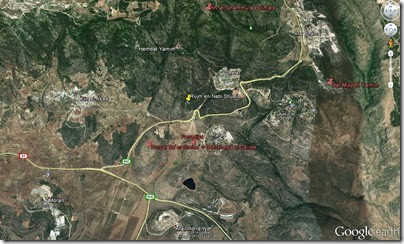A site in the Galilean hills that formed the basis for a master’s thesis is the subject of an article published by Live Science.
A lunar-crescent-shaped stone monument that dates back around 5,000 years has been identified in Israel.
Located about 8 miles (13 kilometers) northwest of the Sea of Galilee, the structure is massive — its volume is about 14,000 cubic meters (almost 500,000 cubic feet) and it has a length of about 150 meters (492 feet), making it longer than an American football field. Pottery excavated at the structure indicates the monument dates to between 3050 B.C. and 2650 B.C., meaning it is likely older than the pyramids of Egypt. It was also built before much of Stonehenge was constructed.
Archaeologists previously thought the structure was part of a city wall, but recent work carried out by Ido Wachtel, a doctoral student at the Hebrew University of Jerusalem, indicates there is no city beside it and that the structure is a standing monument.
“The proposed interpretation for the site is that it constituted a prominent landmark in its natural landscape, serving to mark possession and to assert authority and rights over natural resources by a local rural or pastoral population,” Wachtel wrote in the summary of a presentation given recently at the International Congress on the Archaeology of the Ancient Near East.
The story continues with more details of the site and its purpose, but I wouldn’t put too much stock in the interpretations offered. We just know too little about the region in this time period. The Times of Israel includes a map of the area.
From Google Earth; click for enlarged view




